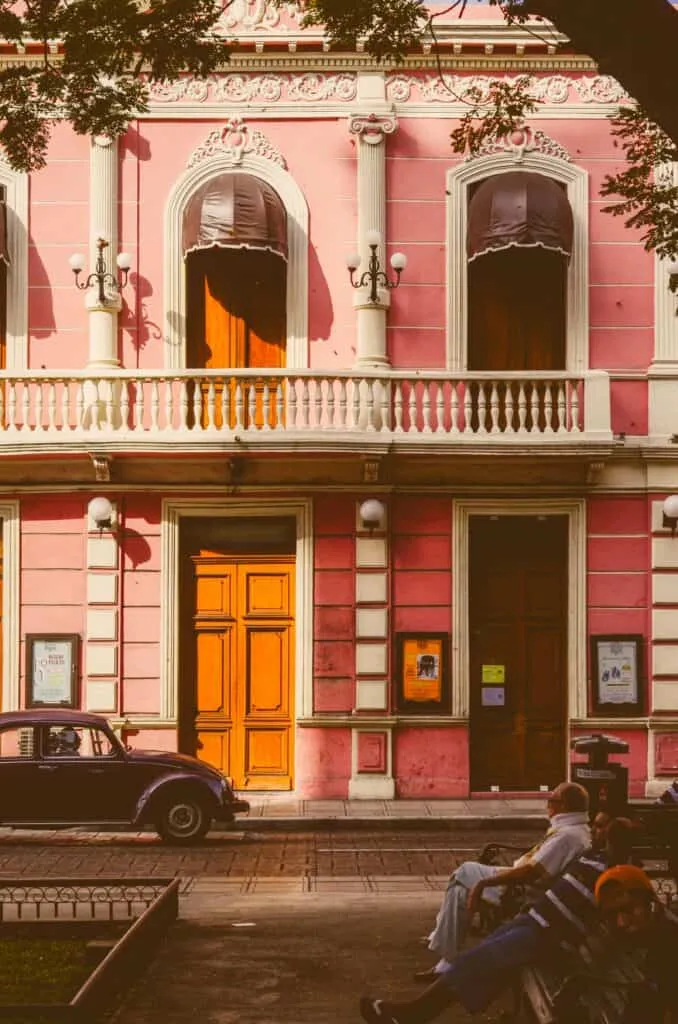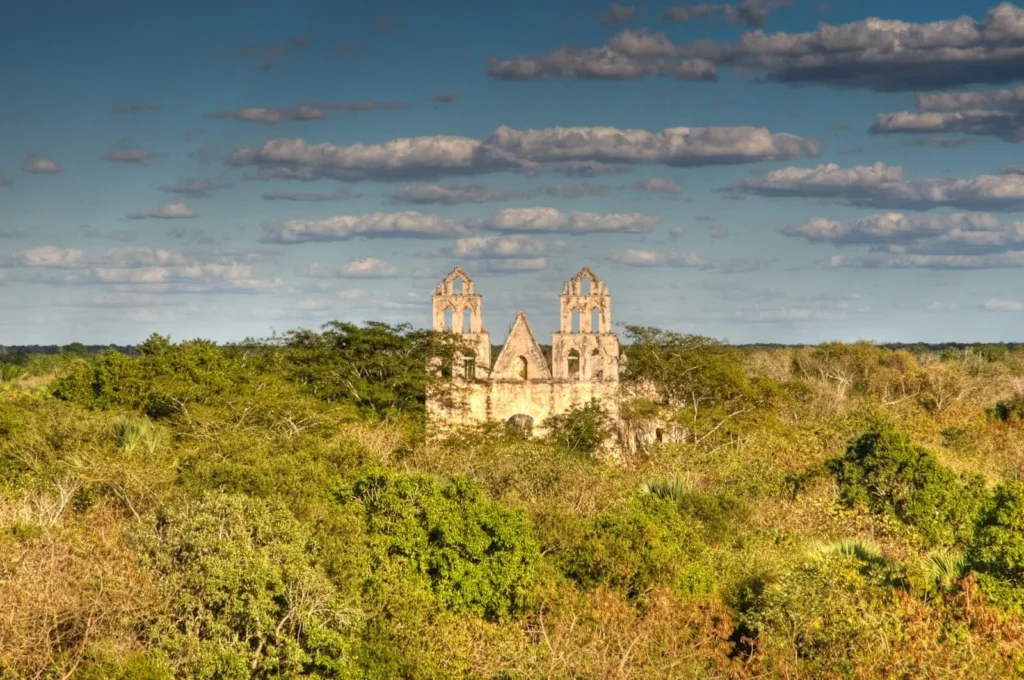

On his recent trip to Mexico with Plan South America, Stanley Stewart explored the ancient treasures of the Yucatán Peninsula.

“The Yucatán peninsula lay at the heart of the Mayan world, an entity that spilled across present-day national boundaries into Guatemala, Belize and Honduras. Its sun-baked landscapes are dotted with the ruins of an empire whose sudden demise sometime in the ninth century, known as the Mayan collapse, still mystifies historians and archaeologists.
…
Beneath vast skies, the Yucatán peninsula is bleakly beautiful, an atmospheric flatland covered in low jungle and dry scrub where parched fields are tended by men with hoes.
Among Mexicans, Yucatecans have a reputation for civility, for honesty, for shyness. Down empty country roads are sweet old-fashioned villages where dogs meander, children scrump for sugar apples and old people sit on stoops, while horses pant beneath heavy ceiba trees. There is a sense of nostalgia here, as if the Yucatán belongs to an earlier, simpler, more honourable age.”
“As for Merida (…) The city is an elegant place of squares and courtyards, of Belle Époque mansions and humble one-storey houses in pastel colours. Looming over the Plaza Grande is the Catedral de San Ildefonso, the oldest cathedral on the American mainland, completed in 1598, 28 years before the Dutch got around to building the first rickety trading shack on Manhattan.
In the evenings, under the square’s laurel and caimito trees, trios stroll with their guitars, dressed in white guayaberas and black trousers. They are musicians for rent, playing languid, dreamy boleros with absurdly romantic lyrics. Hail them like taxis, and they will serenade your date.”


“Meandering south from Mérida across the plateau are two named routes for visitors to follow — the Ruta Puuc and the Ruta de los Conventos. The first led to ancient Mayan ruins. The second brought me to those old-fashioned villages, the curiously modest successors of the great cities of the Yucatán.
I took the Puuc Route to the ruins of the city of Uxmal. With its monumental structures, Chichén Itzá may be the most spectacular of Mayan ruins, but its proximity to Cancún means that its atmosphere is undermined by crowds of visitors. Uxmal is more peaceful — less shopping arcades and turnstiles, more quiet contemplation. Architecturally and aesthetically, it is arguably the greatest of Mayan cities.
…
Part of the beauty of these Mayan ruins is their sylvan setting — the swaths of green, the old trees, the birdsong, the shadows, the butterflies, the drone of cicadas, the wild flowers sprouting among ancient stones. The art at Uxmal is gorgeous, surfaces swarming with closely knit interlocking figures. The architecture is exquisite.
The first building to confront the traveller is the soaring Magician’s Pyramid, with its thrilling inclines. On the far side of the site, past the deadly ball court and the House of the Turtles, is the Governor’s Palace, the rhythms of light and shade along its facade broken by diagonal bands of mosaic decoration.”
“On my last day, I went to a cenote. There are almost no rivers or lakes on the northern part of the peninsula. But cracks in the limestone crust caused by the asteroid impact that spelt the demise of the dinosaurs — it landed on the Yucatán 66mn years ago — have created sinkholes that reveal a vast subterranean water world of lakes and rivers in labyrinthine caves and caverns. For the Mayan these cenotes were sacred, portals to the underworld of Xibalba.
For the modern visitor, it is like floating in air. At Los 7 Cenotes, a collection of cenotes on a private reserve just outside the town of Sotuta, I climbed down steep ladders, jumped from platforms, abseiled from a cenote rim into a strange watery purity. Sometimes the cenotes are in darkness, sometimes open to the sky, holding the reflections of clouds across their pristine surfaces. Cenotes affect people. Some laugh, others cry. Buzz Aldrin, the second man to walk on the moon, is reputed to have said that diving in them was the nearest thing on Earth to being in outer space. I spent an afternoon in this watery underworld, surrounded by rock formations and curtains of trailing vegetation, floating on my back among wavering channels of sunlight. Tiny Melipona bees came to drink. Swallows danced above the surface. Stalactites hung from the rock, measuring millions of patient years, drip by drip, as accurately as a Mayan calendar.”
Stanley Stewart travelled with Plan South America.

Related Stories

The Insider’s Guide to Chile’s Atacama Desert

Discovering Gaston Ugalde: Bolivia Through the Eyes of the Andean Warhol

Where to Ski in South America

How to Spend a Weekend in São Paulo: An Insider’s Guide
@plansouthamerica



